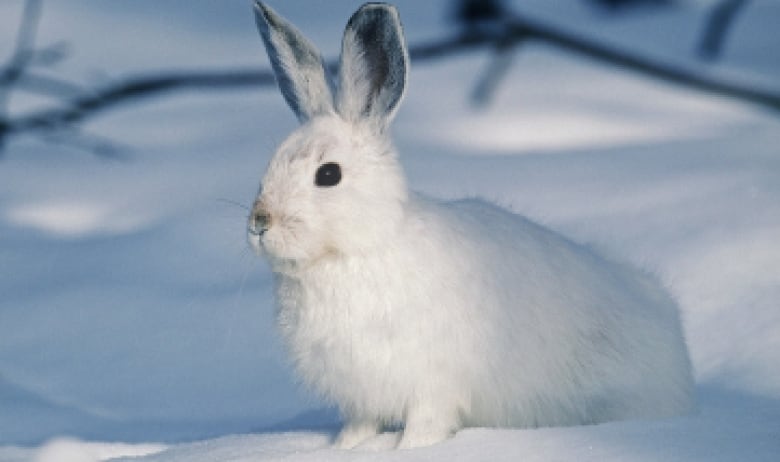Equipped By Nature To Survive
"It’s surprising in the sense that a good portion of the carcasses we put out, we found snowshoe hares scavenging.”
"It was almost fifteen percent of the carcasses we had put out [that] had a snowshoe hare scavenging at them ... so it seems like something that is pretty regular in their winter diet."
"We found that scavenging primarily occurs in the winter; it seems like there is a pretty clear seasonal pattern and at that time hares, at least in our area, are existing entirely on woody browse."
"I have heard people just on Twitter and messaging me that their domestic rabbits … they found consuming meat regularly. They would be doing that behaviour if they were getting [a] low-protein diet, would be my guess."
"It's weird seeing a bunny … just kind of getting its head right into the side carcass of another rabbit and consuming meat. It's kind of, I guess, not what you'd expect."
Michael Peers, biology, ecology researcher, PhD candidate, University of Alberta
 |
Snowshoe hares can be carnivorous creatures that don’t seem picky about the type of meat they eat.
"This carcass deployment was particularly unique, as multiple hares were seen at the carcass simultaneously, and based on posture and subsequent chases, it appeared that individuals defended the carcass from other hares."
Study, Northwestern Naturalist journal
| A hare is caught on camera eating grouse feathers. (Submitted by Michael Peers) |
Thanks to the camera results, hares were seen to be eating lynx carcasses, snow buntings and spruce grouse, not to mention corpses of their own species. Left in a stand of tees in late 2015, a hare carcass had been scavenged on twenty-four occasions by other hares over the course of a week. A growing body of evidence indicates that herbivores will eat meat when it's available. The key is availability given their poor track record at hunting.
A sensation had resulted from a 2010 video that showed a deer eating a baby bird that had fallen to the ground. Since that event Canadian, American and Scottish bird researchers confirmed a like phenomenon of deer consuming baby birds fallen out of the nest, even browsing through the content of a nest located low enough on a branch for the deer to reach.
Researchers placed cameras at northern bobwhite nests for a 2008 study published in the journal Southern Naturalist, tracking the birds' natural predators to discover two deer casually appearing for the purpose of eating eggs. The first-ever evidence of a deer scavenging human bones was documented four years ago by Texas researchers at the Forensic Anthropology Research Facility where donated human bodies are left in the out-of-doors to study the effects of decomposition.
Deer are not known for their hunting skills, lacking the sharp teeth required to tear into a fresh carcass -- so it's logical that most of their access to meat is of the 'opportunistic' bent; a carcass stumbled upon or alternately, coming across a small animal or bird that can be captured and eaten; not a scenario normally linked to either deer or hares.
Beavers were recently documented eating salmon on occasion during spawning season: "We suggest this behaviour may be a fairly common strategy", according to a 2014 paper published in Canadian Field-Naturalist. Deer seem to be amenable to eating available meat at any time; in contrast hares appear to restrict their meat-eating to the winter months when food is seasonally scarce. Hares were observed to ignore summertime carcasses.
Out of Switzerland came a 2015 study where a team of zoologists reported on a Swiss bird sanctuary. There, domestic rabbits shared an enclosure with small birds-of-prey and from the beginning the rabbits regularly took to eating out of the dishes of dead chicks and mice left for the birds. "When the caretaker brought the daily prey ration for the raptors, the rabbits immediately ran toward the person and followed him even when the dish was placed on an upper perch."
 |
| Don't be deceived — these fluffy bunnies enjoy eating meat every now and then. (Alberta Environment and Parks) |
Labels: Biology, Carnivores, Herbivores, Research, Winter Diet

0 Comments:
Post a Comment
<< Home